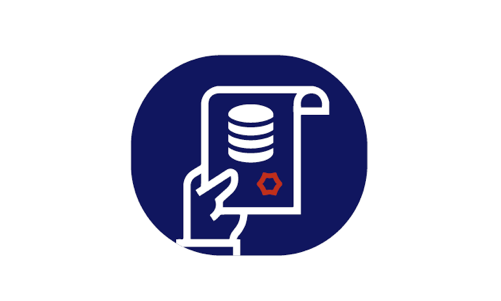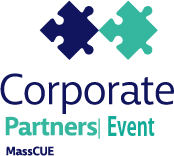Meet the 2016 MassCUE Grant Winners
Congratulations to the 2016 MassCUE Grant Winners. Each recipient has a great story to tell. See how these grants were utilized to make a difference in the classroom and in their students lives.
Join us in congratulating these innovative educators!
| 2016 Grant Winner | Bio |
|---|---|
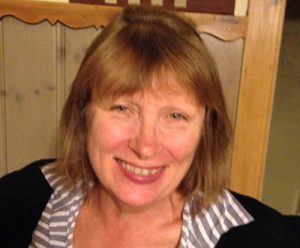 |
Anne SullivanAnne is a 5th grade teacher and she requested 3 Lego Mindstorm robots and 12 Nexus Androd tablets so that her students can use the Scratch programming language and Code.org website lessons to have students learn about the design and engineering process. Fifth grade students will be able to select a real world problem of their choice to address, research, develop a prototype and present their solution idea at her school’s Annual Invention Convention in June 2016. Anne will share this project with her colleagues. |
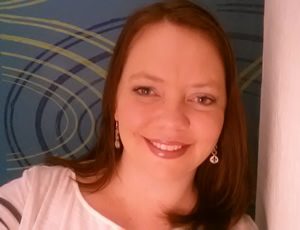 |
Brandy JacksonBrandy is a middle school technology teacher. She requested a Printrbot Plus 3D printer, one iPad, 3D printer filaments, and other tech-related supplies to implement her project, Charms for Change: Using 3D Printing to Change the World. Eighth grade students will select an ecological problem to learn about, develop a public service video using an iPad to be shared on cable access and the school’s Youtube channel, use TinkerCad software to 3D print unique charms, and create business cards with QR codes to link the charms to the students’ videos. A Film Festival will be held to show the student videos and deliver the charms “to market”. Professional development on how to use and integrate 3D printing will be offered to her teaching colleagues. |
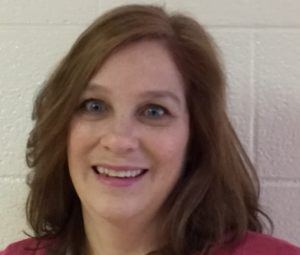 |
Brenda DoucetteBrenda is a second grade teacher. She requested 10 Acer Cloudbook devices to implement a blended learning information center project, QR Codes for Innovative Learning and Differentiated Instruction in her classroom. Brenda wishes to address reading literacy and math literacy with differentiated lessons and learning pathways for her students using a blended learning station-rotation model. Second grade students will write book reviews that will be linked to QR codes that will be placed on the books for other students to select.To support differentiated math literacy, students will be able to view teacher-created math tutorials and progress at their own pace. Brenda will conduct professional development in her district to share how the use of QR codes can support innovative and differentiated models of teaching and learning. |
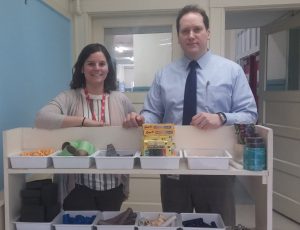 |
Corinne Brems and Gideon GaudetteCorinne is a curriuculum title 1 director and Gideon is an elementary school principal. They requested a Lulzbot Mini 3D printer, one Surface tablet, 2 SparkFun Pico Boards, and 3D printer filaments to support their school’s makerspace initiative. In support of the fourth grade National Park project and the fifth grade Historical Figure Wax Museum project, fourth and fifth grade students will use the Scratch programming software to create interactive games for their national park or chosen historical figure. Students will create and design a prop or accessory to illustrate their learning using the 3D printer. In a Showcase of Makerspaces in June 2016, students will present their projects to the community in a National Parks Tour and Wax Museum Night. |
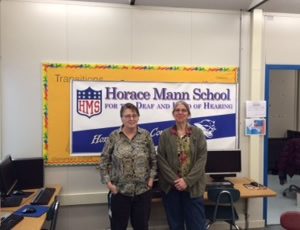 |
Charlotte Corbett and Fiona BennieCharlotte is a technology specialist and Fiona is a science specialist. They requested 7 video cameras and one computer workstation. Middle school students at the Horace Mann School for the Deaf will use the video cameras to create stop-motion videos to capture and illustrate their learning about the science topics of density and heat transfer with hands-on demonstrations as well as provide claims, evidence and reasoning in response to critical questions of this integrated science and technology lesson unit. |
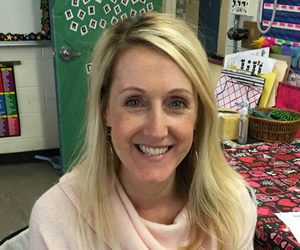 |
Christine YeomansChristine is a fifth grade teacher. She requested a Lulzbot 3D printer and various printer filaments to support her project, the Amvet Mini-Entrepreneur Invention Convention. Fifth grade students will research past inventors, identify a problem or current need for solving, engage in problem-solving and protyping as well as create an advertisement for their product. Students will present their projects at a Mini-Entrepreneur Invention Convention to students and parents to “sell” their idea to the community. |
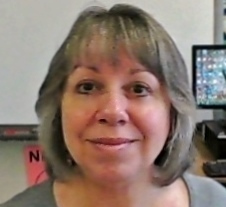 |
Carmella HughesCarmella is an elementary school technology integration specialist. She requested a Beebots class bundle, a Make wonder Dash starter pack, 1 Kibo robot kit, and 2 Littlebits student kits to support her K-5 pilot project, Make It: Code and Create. Elementary students in grade K-5 will be introduced to coding in this STEM set of lesson units using code.org website resources and learn basic coding language in order to support collaboration and problem solving and the integration of STEM into ELA, math, science and social study classes at the elementary level. Carmella will work with teachers in a coaching model to provide support. |
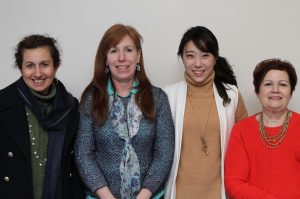 |
June Kim and ColleaguesJune is a digital instructor. She requested 6 iPads to support her project, Using iPads to integrate the Arts into Social Studies. The title of the lesson unit is “Storytellers from the Pre-American Revolution Era“. In this lesson, eighth grade students will develop their knowledge of the causes of the American Revolution and the role of artists in 1763-1776 by studying historical events and analyzing the historical contexts of artworks. Students will illustrate and narrate events that caused the American Revolution and create storytelling movies using iPads. These videos will be presented at a parents’ coffee meeting to contribute the education of grade 8 students, their parents and other family members. |
| Photo |
Jean MarstonJean is an assistant principal. She requested a Flashforge Creator Pro 3D printer to support her project, Making Dopamine/Cocaine receptor binding visible and tactile with a 3D printer. In this biology lesson, high school students will learn about receptor binding. Educating students about the dangers of using drugs is difficult. The words they hear describe the chemical substances and the actions taken within the brain at the cellular and molecular levels. The meaning made from these words, pictures and videos is shallow. How can that meaning become transformative? By creating the bio-molecular structures of neurons, dopamine, cocaine and receptors with a 3-D printer, students can fit the pieces together themselves. The structures fit together like puzzle pieces, so the students will see and feel first-hand the match in the binding. This multi-sensory input to the brain will make more connections and increase the understanding of the power of neural bonds that are in our brains. Students will begin to understand how those bonds are problematic when resisting drug addiction. |
| Photo |
Kim Florek and Kevin HodgsonKim is a Director of Technology and Kevin is a sixth grade teacher. The requested 12 Chromebooks to support their project, Writing and Reflection: Nurturing Digital Portfolios for Sixth Grade and Beyond. Sixth grade students will create Google sites to showcase their writing and reflection process across the sixth grade curriculum. Students will gather various genres of writing samples that will document their growth as writers throughout the school year and learn about expectations for publishing their work for an authentic audience. Students will share their sites with their parents at the end of the school year, and it is expected that this will launch a multi-year digital portfolio process for students. |
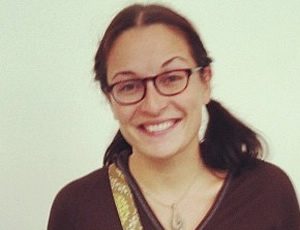 |
Kate PowersKate is an elementary school library media specialist. She requested 10 iPad minis to support her project, Dewey’s Amazing Race. The World is Waiting…Go! Taking a cue from the television reality show The Amazing Race, elementary students—armed only with iPads—will “travel” through the non-fiction section and experience puzzle solving, building and engineering, learning foreign languages, identifying and exploring new places, and creating interactive projects—finishing with a new knowledge of library wayfinding and a student-generated movie showing their journey from the 000s to the 900s, a great tool to demonstrate understanding plus a library resource library. |
| Photo |
Kim is a middle and high school speech-language pathologist. She requested a SWIVL robotic platform for video to support her project, Swivling our way to Exceptional Oral Communication: A Journey of Reflection, Insight and Evolution. This project will target the development of oral communication skills among middle school students with known communication disorders and learning disabilities. Students will use a rubric to self-asseess and group-assess their oral communication performance using criteria such as Poise, Voice, Life, Eye Contact, Gesture and Speed. Pairing the rubric with Swivl video review and reflection, students will gain insight as to strengths and weaknesses to inspire improved self-monitoring, self-correction, and overall oral communication growth. |
| Photo |
Mary Ellen D’EspinosaMary Ellen is a middle school math teacher. She requested a Vernier GoLink wireless interface, 8 Go Links and charging station, 9 gas pressure sensors, 9 ph sensors, 9 temperture probes, and Teacher Guide to support her project, Probing Mathematical Functions. Eighth grade students will learn about the study of linear functions, exponential growth and decay patterns and inverse variation functions through the use of wireless probes that allow more hands-on observable data collection and analysis. The Go Wireless LInk is a Vernier interface that uses bluetooth technology to transmit data from probes to iPads wirelessly. Middle school students will be able to engage more readily in interactive data anaysis with activities such as collecting data as an antacid dissolves in water, measuring pH as an antacid is dropped into lemon juice, and creating exponential graphs for cooling water. Mary Ellen will provide mentorship to teaching colleagues in the 7th and 8th grade to utilize the probes as well. |
 Print this post
Print this post

